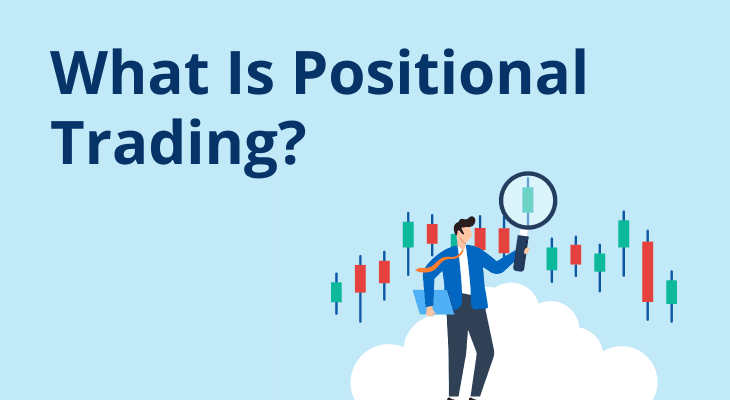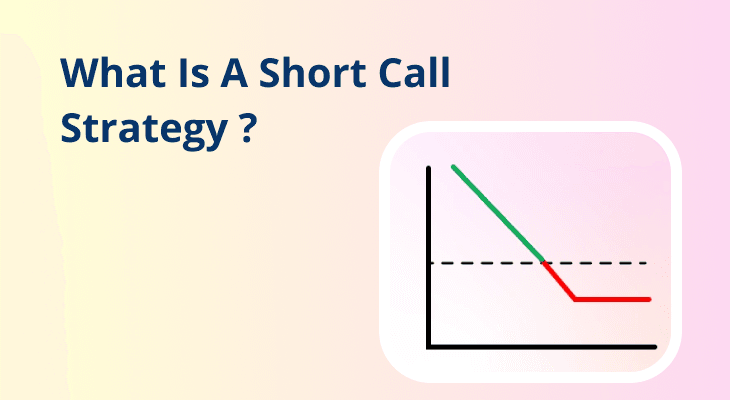
What Is Positional Trading?
For anyone starting out with stock trading, one of the first challenges is choosing a trading style that suits their goals, time horizon, and risk appetite. While some prefer daily trades and quick profits, others look for a more patient, long-term approach. This is where positional trading comes in.
Unlike day trading or scalping, positional trading allows investors to hold positions for weeks or even months, capitalising on broader market trends rather than short-term price movements. It blends the strategies of both investing and trading, making it a popular option for many investors who cannot monitor the market daily but still wish to benefit from price movements.
Let us explore what positional trading is, how it works, and how beginners can approach it with the right strategy.
What Is Positional Trading?
Positional trading is a strategy where an investor buys and holds a stock or financial instrument for a longer duration, usually ranging from a few weeks to several months. The goal is to profit from significant upward or downward price movements that play out over time.
This trading style is not driven by intraday fluctuations but by fundamental or long-term technical analysis. Traders rely on broader market trends, economic data, and company performance indicators to make their decisions.
In many ways, positional trading is the middle ground between short-term trading and long-term investing. You are not holding stocks for years like in pure investing, but you are also not closing your trades every day.
Additional Read: Types of Stock Trading
Understanding Position Trading
At its core, position trading focuses on identifying a strong trend and riding it to its full potential. Traders using this strategy often base their decisions on:
- Technical analysis: Identifying patterns, breakouts, or support/resistance levels on price charts.
- Fundamental analysis: Evaluating company earnings, sector outlooks, macroeconomic factors, etc.
- Trend confirmation: Waiting for the market to confirm a direction before entering a trade.
Unlike a day trader who may execute 10 or more trades a day, a positional trader may enter just one or two trades in a month, depending on opportunities. Once a trade is placed, it is left to perform without constant monitoring, unless the market trend changes drastically.
Pros Of Positional Trading
Positional trading offers several benefits that make it a good starting point for beginners who are learning about markets without the pressure of constant trading. Here are the major advantages:
1. Less Stressful Than Day Trading: Since positions are held for weeks or months, you are not constantly glued to the screen. This makes it suitable for people with full-time jobs or other commitments.
2. Lower Transaction Costs: Fewer trades mean less brokerage, fewer costs, and lower impact of slippage costs. This can significantly boost your net returns over time.
3. Capitalising on Bigger Market Moves: Positional traders aim to benefit from large price trends, which often yield bigger gains than quick intraday trades.
4. Time to Analyse and Plan: You get enough time to research your trades and enter them thoughtfully, instead of rushing decisions based on short-term movements.
Cons Of Positional Trading
While the benefits are appealing, it is equally important to understand the risks and limitations:
1. Exposure to Overnight and Weekend Risk: Since trades are held for long durations, market gaps due to unexpected news or geopolitical events can cause abrupt price movements.
2. Requires Patience: Not all trends play out quickly. Sometimes it may take weeks for the price to start moving as expected. Emotional discipline is key.
3. Capital Can Be Tied Up: Your money remains locked in the position, making it less flexible to act on new opportunities during the holding period.
How To Trade Using Positional Trading Strategies?
If you are a beginner, here is how you can approach positional trading with confidence:
1. Start With Trend Analysis
Identify a strong trend using moving averages, RSI, MACD, or support/resistance zones. Look for clear signals rather than random price spikes.
2. Confirm With Fundamentals
Before placing a trade, understand the company's financials, future outlook, sector performance, and any upcoming news or earnings.
3. Set Entry, Stop-Loss, and Target
Clearly define your entry price, a stop-loss to limit risk, and a target price for profit-taking. Stick to your plan.
4. Monitor Periodically
You don’t need to watch the chart every hour, but do review weekly for any change in trend, news updates, or earnings reports.
Common Positional Trading Strategies
There are a few widely used strategies that positional traders follow to increase their chances of success:
1. Breakout Trading Strategy
In this approach, traders wait for the price to break above a resistance level or below a support level with high volume. Once the breakout is confirmed, a position is entered in the direction of the breakout.
- Example: A stock consolidates between ₹800–₹850 for three weeks. Once it breaks out above ₹ 850 with strong volume, you can buy it and hold for weeks, expecting an uptrend.
2. Pullback and Retracement Trading Strategy
Here, traders look for stocks that are in an uptrend but temporarily pull back. These short-term corrections are used as entry points.
- Example: A stock rising steadily from ₹600 to ₹750 dips back to ₹700 due to profit-booking. If the trend is still intact, you can enter at ₹700 expecting the price to resume its upward move.
Is Position Trading Right for You?
Position trading can be a great option if you:
- Have a medium to long-term investment horizon
- Prefer to avoid the stress of daily trading
- Are comfortable with waiting patiently for returns
- Can tolerate some volatility along the way
However, it may not suit someone looking for fast profits or who lacks the patience to sit through weeks of market fluctuations.
It is also important to build your skills in technical and fundamental analysis to improve your trade accuracy. Beginners can start small, track their trades, and gradually scale up as their understanding grows.
Conclusion
Positional trading is a practical, less stressful, and potentially rewarding strategy for beginners. It allows you to make informed trades, benefit from long-term trends, and avoid the chaos of daily price action.
As with any trading approach, a disciplined plan, regular learning, and risk management are essential for success. Whether you are new to the markets or looking to diversify your trading style, positional trading is a valuable strategy worth considering.
Additional Read: A complete guide on Intraday Trading | Mirae Asset
FAQ
What is positional trading in the stock market?
Positional trading is a strategy where traders hold stocks or assets for a few weeks to several months, aiming to benefit from medium- to long-term price trends. It combines elements of investing and trading, allowing individuals to capture larger moves without frequent buying and selling, making it suitable for those with a longer-term market view.
How is positional trading different from intraday trading?
Intraday trading involves buying and selling within the same day, focusing on small price movements. In contrast, positional trading holds stocks for weeks or months to ride broader market trends. It requires less screen time, lower transaction costs, and suits investors with a longer time horizon and moderate risk appetite.
Do I need to monitor the market daily for positional trading?
No, constant monitoring isn’t necessary for positional trading. Since trades are based on long-term trends, you can review them weekly or when major news affects your positions. However, it’s important to stay updated on earnings reports, economic developments, or any news that may impact your holdings.
What are some good indicators for positional trading?
Common indicators include moving averages (50-day/200-day), Relative Strength Index (RSI), MACD, and Bollinger Bands. These help identify trend directions, entry points, and overbought/oversold conditions. Combining technical indicators with basic fundamental analysis improves accuracy and helps confirm trade signals in positional strategies.
Is positional trading safe for beginners?
Positional trading can be a safer choice for beginners compared to intraday or scalping. It involves fewer trades, gives more time for analysis, and reduces emotional decision-making. However, like any trading style, it carries risks and requires basic knowledge of chart patterns, trend analysis, and risk management practices.
Can I do positional trading with a small capital?
Yes, positional trading doesn’t require large capital upfront. You can start with a small amount and gradually scale as you gain confidence. Since fewer trades are executed, transaction costs are lower. It's advisable to diversify across a few strong picks rather than putting all funds into one stock.
What kind of stocks are ideal for positional trading?
Stocks with strong fundamentals, clear uptrends or downtrends, and good liquidity are ideal. Mid-cap and large-cap stocks are often preferred due to stability. Avoid highly volatile or illiquid stocks, as they may not follow predictable patterns and can lead to unexpected losses during the holding period.
How do I set a stop-loss in positional trading?
Stop-loss should be set below a recent support level or below the point where your trend thesis becomes invalid. For example, if you buy a stock at ₹500 and the last support is at ₹470, you might set a stop-loss slightly below ₹470 to limit losses while allowing for minor fluctuations.
Can I combine positional trading with other strategies?
Yes, many traders combine positional trading with swing trading or long-term investing to diversify strategies. For example, you might use positional trading in trending markets and switch to swing trading during consolidations. However, clarity on goals and risk management is essential when juggling multiple strategies
How much time should I hold a stock in positional trading?
There’s no fixed timeline, but typically, positional traders hold stocks for a few weeks to a few months. The position is maintained until the target is reached or the trend shows signs of reversal. It’s important to exit based on market conditions, not just time.


